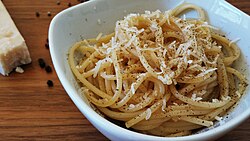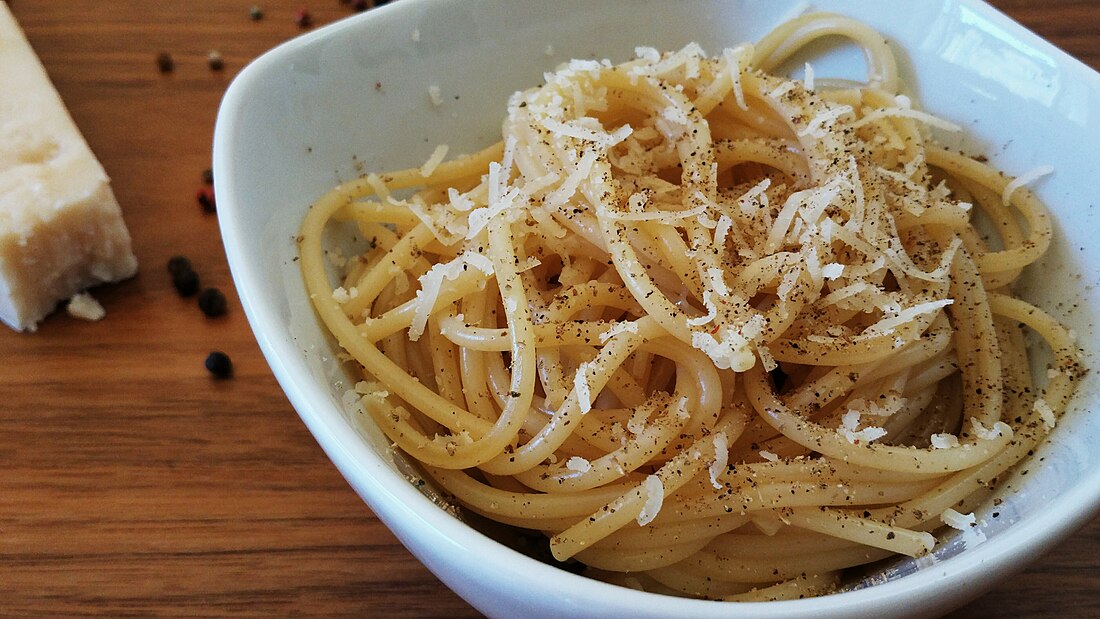Cacio e pepe
Italian pasta dish From Wikipedia, the free encyclopedia
Cacio e pepe (Italian: [ˈkaːtʃo e pˈpeːpe]) is a pasta dish typical of the Lazio region of Italy.[1][2] Cacio e pepe means 'cheese and pepper' in several central Italian dialects. The dish contains grated pecorino romano and black pepper with tonnarelli[3] or spaghetti.[2] A common story is that shepherds from the pastoral communities of Lazio, Abruzzo, Tuscany, and Umbria created cacio e pepe in the 18th or 19th century. It is likely that black pepper was added to the dish much later, as it was expensive and not readily available to shepherds at the time.[4]
 | |
| Course | Primo (Italian course) |
|---|---|
| Place of origin | Italy |
| Region or state | Lazio |
| Main ingredients | Tonnarelli or spaghetti, pecorino romano, black pepper |
Preparation

The pasta is prepared in boiling salted water as usual; it is then poured into the grated pecorino mixed with black pepper, with a little of the hot, starchy, cooking water. The heat melts the cheese, and the starches in the water help bind the pepper and cheese to the pasta.[5]
See also
![]() Media related to Cacio e pepe at Wikimedia Commons
Media related to Cacio e pepe at Wikimedia Commons
References
Bibliography
Wikiwand - on
Seamless Wikipedia browsing. On steroids.
